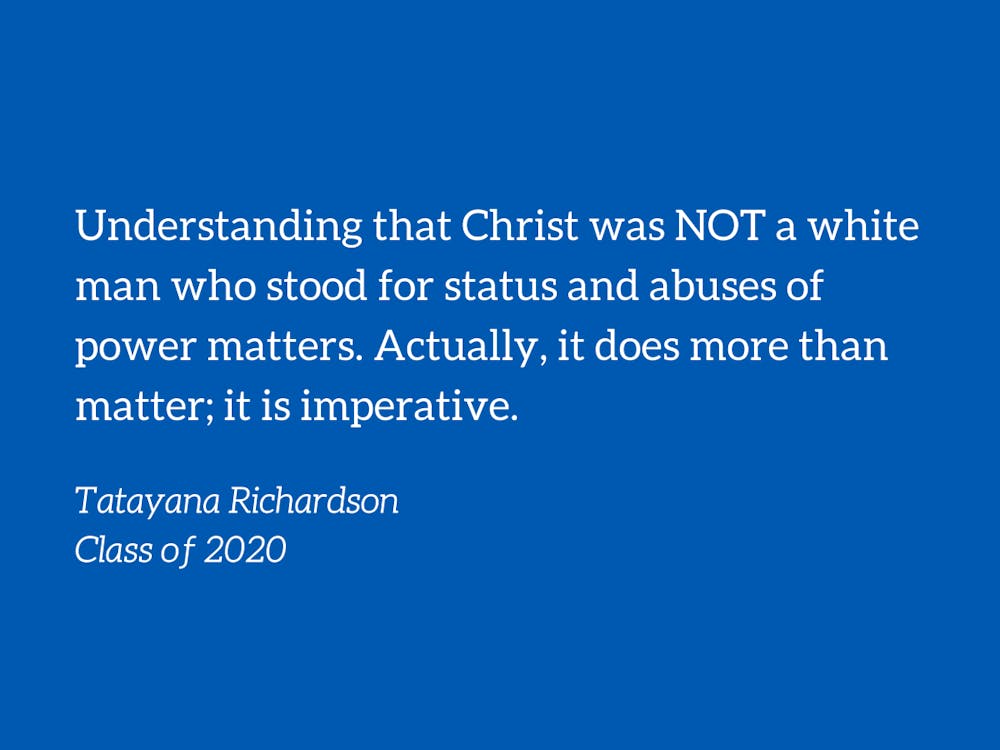“Question: Why did God make Jesus white, when the majority of peoples in the world are non-white?
This is the quote the Rev. Dr. Martin Luther King Jr. gave when asked about the race of Jesus in October of 1957.
What made this quote off putting to me was not the existence of a conceptualization of Jesus as white, so much as the idea that one of the most prominent figures in the American history of Black Civil Rights–who was himself Black–thought the Son of God was white.
While King’s statement that “Jesus’s skin color is of little consequence” should perhaps be true, as Howard Blum says, “a Jewish Prophet from the Roman era ran so explosively into the American obsession with race that his image has been used to justify the worst atrocities of white supremacy as well as inspire the most heroic of civil rights crusades.” That is to say that, while empirically the race of Christ shouldn’t matter, it does.
Even though race is a social construct, and one that is much different today than it would have been in Jesus’s time, it is a construct with very real implications. For Christianity to ascribe Jesus' race as white distorts the historical fact that, geographically speaking, he would have been of Mediterranean or African descent. More than that, to assert that Jesus was white is to imbue him with a sense of privilege and power contrary to the story of what Christ experienced.
This matters because “Christ is the essence of Christianity,” and “Christianity is essentially distinguished from other faiths by the fact that everything in it is related to the redemption accomplished by Jesus of Nazareth.”
So how, then, if Jesus is so central to the faith, did Christianity get this one imperative construction wrong?
The process of white washing Jesus was not unique in any real sense. It was done through art, through writing and of course through sermon. Art like Leonardo da Vinci’s “Last Supper,” Michelangelo’s “Last Judgment” in the Sistine Chapel and Warner Sallman’s light-eyed, light-haired “Head of Christ” made Jesus palpably white to common people. This art worked in conjunction with the already dominant theology built on centuries of white European thought that deemed Jesus to be a white man.
This white washing set the stage for the justification that Jesus stood with the powerful rather than the disenfranchised. For example, when hate groups such as the Klu Klux Klan called themselves Christian groups, they did so under the guise of protecting the purity of a race pre-ordained.
Yet briefly in the 1930s and again in the 1960s and 1970s–more sustainably the second time around–Jesus was not only analyzed as standing with the oppressed and dismantling the status quo, but he was constructed as a Black Man. This construction of Jesus arose from the assertion by Black theologians that a Jesus who stood and empathized with the marginalized and was crucified at the hands of an unjust government could not be white.
In recent years, academia and some parts of the church have begun the process of recognizing the actuality of what Jesus looked like, to more closely agree with the constructs of Black theologians of the 1930s and 1960s. More simply put: people finally realize that Jesus wasn’t white.
That leads one to ask: how have we simultaneously made Jesus so racially malleable and static? And how do we properly speak truth to power about the nature of Jesus’s race and appearance, while acknowledging that the church and Christians at large have not always gotten this right?
This brings us back to King’s quote. I will never agree with him on the fact that Jesus was white. Nor will I agree that race is completely inconsequential. Race has been used as a construct to subvert and deny the rights of generations of peoples and that matters. Race is still used–whether explicitly or not–to justify the murder of Black and Brown people, and that matters.
So yes, understanding that Christ was NOT a white man who stood for status and abuses of power matters. Actually, it does more than matter; it is imperative.
Jesus Christ came to liberate humanity’s minds, bodies and souls. He came to teach us to do unto others as we would have done unto us. He came to show us that we should stand with the oppressed and never allow injustices to go unnoticed. Understanding what he looked like while he did it is not an inconsequential thing in a world where skin color has literally meant the difference between life and death. Yes, the message he brought and the lessons he taught are also of major importance, but for us to get the race of Christ right is essential.
If we can understand that the man who Christians consider to be their savior not only usurped ideas of power and status, but that he did it in the body of a man of color, then perhaps the messages that come out of pulpits on Sunday will change. Perhaps we will no longer allow alt-right Christian hate groups to use Jesus as a reasoning for their unfounded hatred.
Perhaps we will be one step closer to understanding who Jesus was, what he stood for and just how revolutionary he truly was.
Tatayana Richardson is a Trinity senior who thinks everyone should read "The Black Messiah" at least twice in their lifetimes. Her column, "Searching for Canaan," runs on alternate Mondays.
Get The Chronicle straight to your inbox
Signup for our weekly newsletter. Cancel at any time.

